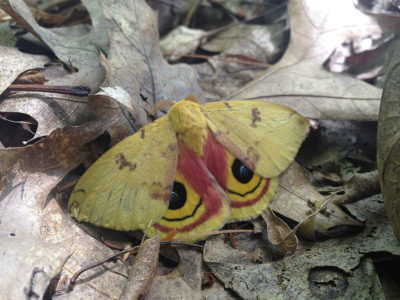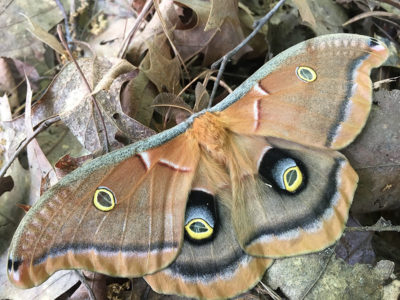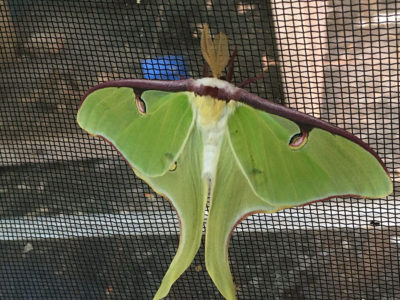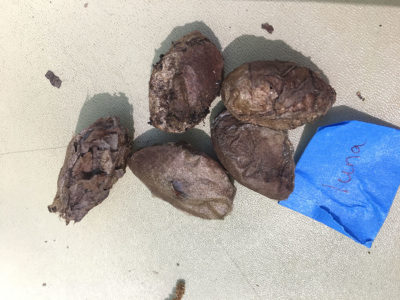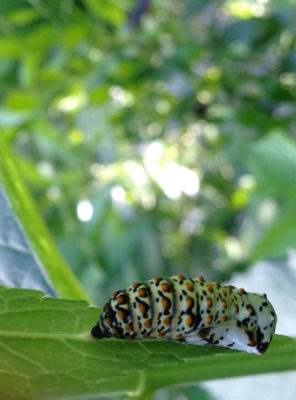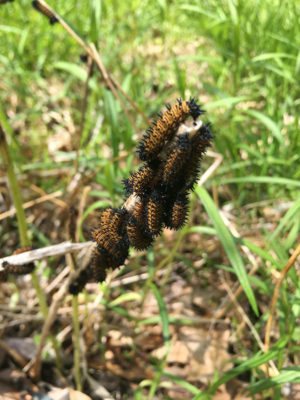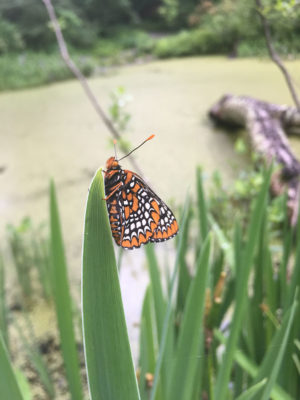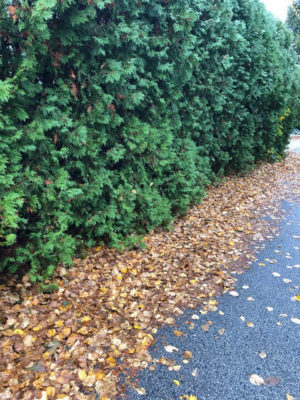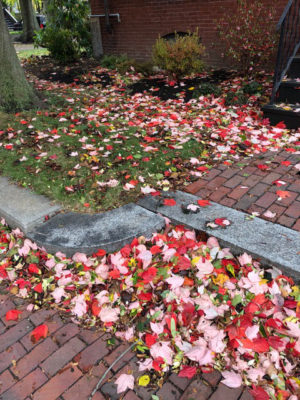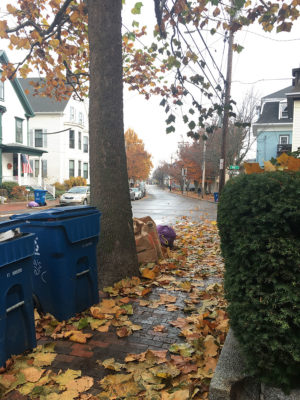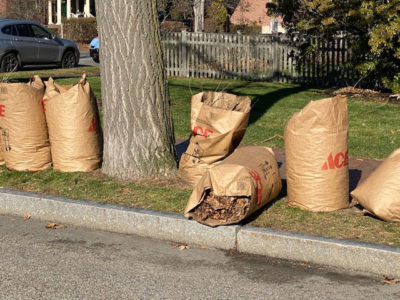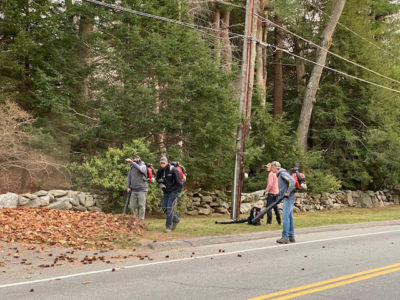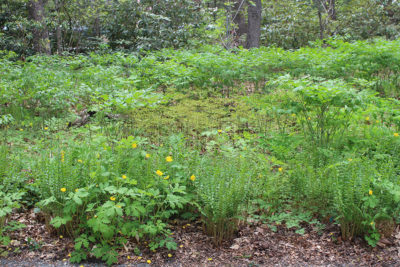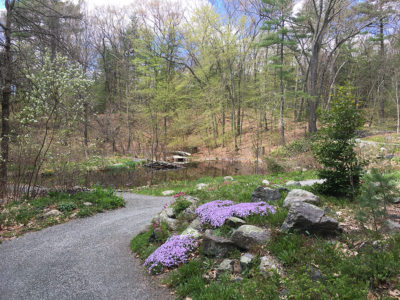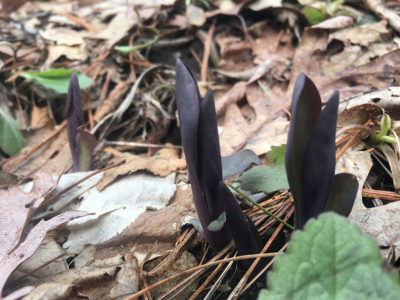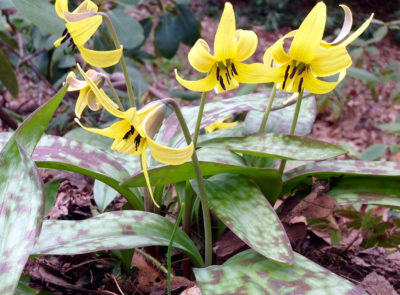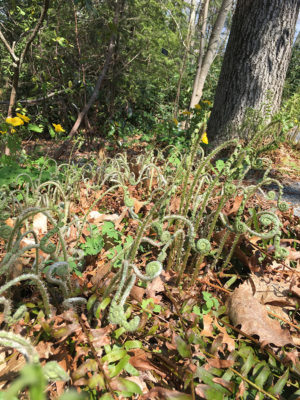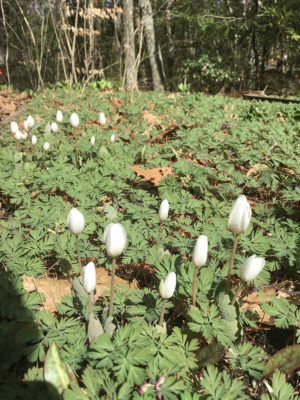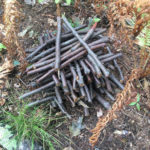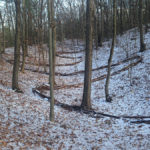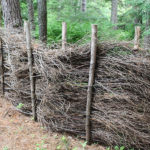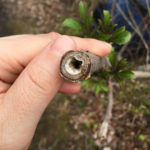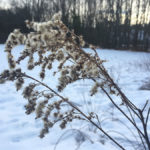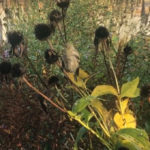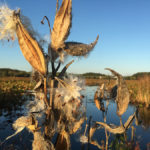Leave the Leaves!
by Anna Fialkoff
Protecting Habitat through the Winter: Leave the Leaves!
While planting native plants is an essential step toward creating habitat, how we tend our plantings determines whether we can sustain and support the life-cycles and successful reproduction of many creatures including birds, butterflies, moths, bees, salamanders, and frogs.
Autumn is when many of us typically think of putting our gardens to bed by removing leaves and cutting back perennials. However, to truly support living creatures year round, it’s much better to leave fallen leaves, branches, stems, and seed heads where they are rather than raking, blowing, shredding, or cutting them away. Leaves and other organic matter insulate plant roots through the cold winter months and then decompose to build up the living soil critical to healthy vegetation. This organic matter also stores large amounts of carbon, which is crucial to supporting a climate-resilient planet.
Rethink your clean up this season and manage your leaves and other natural materials in fun and creative ways while protecting creatures all year long.
Life in the Leaf Litter: Leave what Falls
Many species of butterflies and moths, including our beloved luna moth, pupate and overwinter in leaves before emerging as stunning winged adults the following spring. Raking away the leaves is very disruptive to that life in the leaf litter. Leaf blowers are even more damaging, creating noise pollution and using large amounts of fossil fuels.
Undisturbed leaf litter is also essential to the Baltimore checkerspot butterfly, which requires two seasons to complete its life cycle. After a first season of foraging on its host plant (white turtlehead), the caterpillars crawl down and overwinter in the leaf litter. This once common butterfly is in decline due to loss of habitat and unsupportive gardening practices.
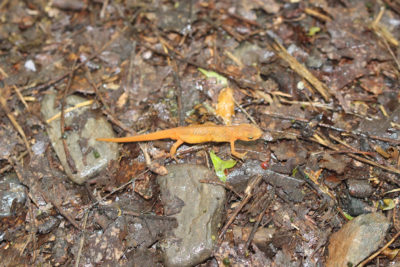 Other small creatures like the eastern newt, as well as many species of salamanders and frogs, spend the frigid winter months hibernating under the protection of leaves, rocks, and logs.
Other small creatures like the eastern newt, as well as many species of salamanders and frogs, spend the frigid winter months hibernating under the protection of leaves, rocks, and logs.
Too Many Leaves?
Leaf management can feel like a never-ending burden in the fall. Even if we want to leave the leaves, we can’t let them accumulate everywhere or they will smother the grass, clog sewer heads, and leave a slippery layer to get mushed into the ground by cars, snowblowers and pedestrians.
Leaves are an exceptionally valuable resource! They contain nutrients and organic matter that can be used on site, instead of raking, blowing and stuffing them into leaf collection bags to be taken away. We can create more places for the leaves to go by shrinking our lawns, creating more planting space, and consolidating the excess leaves that fall outside our gardens.
 Using leaves as mulch is a free alternative to buying bark mulch or other expensive and harmful inputs such as fertilizers and dyed mulches. The space under a tree is an especially critical place to keep leaves since many butterfly and moth caterpillars drop down from trees into the leaf litter to pupate and overwinter.
Using leaves as mulch is a free alternative to buying bark mulch or other expensive and harmful inputs such as fertilizers and dyed mulches. The space under a tree is an especially critical place to keep leaves since many butterfly and moth caterpillars drop down from trees into the leaf litter to pupate and overwinter.
Consolidate Your Leaves
Still too many leaves? Rake extra leaves into a pile, and move your leaf pile somewhere it can compost in place over the next growing season. You’ll be surprised by how quickly it shrinks down.
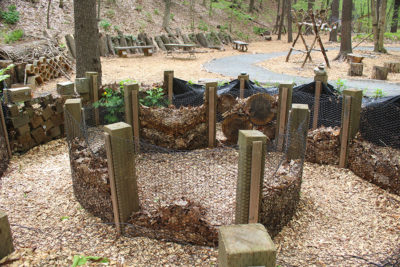 Or, make a leaf fence: coil up chicken wire into columns, arrange them side by side, and fill them with leaves, where they’ll break down quickly over the season.
Or, make a leaf fence: coil up chicken wire into columns, arrange them side by side, and fill them with leaves, where they’ll break down quickly over the season.
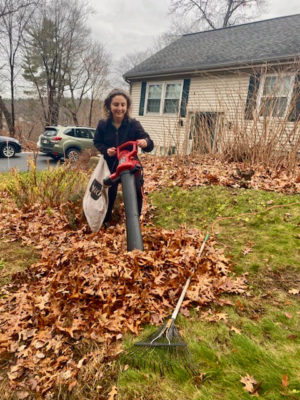 While it’s best for overwintering creatures to compost leaves from your driveway or lawn, shredded leaves do make a beautiful looking mulch for more traditional beds. Shredding leaves does destroy habitat for many small creatures, but can be a fair compromise for situations where a tidier look is preferred. If you are looking for more formality, but want to do less harm, make sure the edges of your planting bed are well-defined, while keeping the interior relatively untouched.
While it’s best for overwintering creatures to compost leaves from your driveway or lawn, shredded leaves do make a beautiful looking mulch for more traditional beds. Shredding leaves does destroy habitat for many small creatures, but can be a fair compromise for situations where a tidier look is preferred. If you are looking for more formality, but want to do less harm, make sure the edges of your planting bed are well-defined, while keeping the interior relatively untouched.
Of all the shredders on the market, an electric vacuum shredder leaves the lightest carbon-footprint. Or, you can simply rake a pile of leaves in the lawn and mow over them several times, then toss them back into the garden bed.
Where Do The Leaves Blow?
Inevitably, leaves will blow around and pile up in various corners of the yard. Rather than repeatedly removing leaves from the same spots, pause and pay attention to where they tend to accumulate or blow away, and plant accordingly.
Plant strong stemmed plants like ferns, baneberries and bugbanes, coneflowers, or milkweeds in the areas where leaves accumulate. Leaves often form a deeper layer in low, concave spaces of the landscape, like at the bottom of a slope or a valley.
There are a few ground covers like sedges, creeping and rock phlox, pussytoes, bearberry, and groundsels that can get smothered by leaves. Plant them in spots where the wind strips leaves away. Leaves don’t tend to stay put on elevated, convex landforms, so don’t fight it and work with what you have.
Wait to remove leaves that get stuck in the crevices between rocks, against fences, and within shrubs until spring, just as you begin to notice sprouting and emergence.
A common worry of gardeners is that plants cannot push through whole leaves or thick layers of leaves. Many woodland natives, even ephemerals like trout lily and squirrel corn, that are adapted to soils rich in organic matter created by decomposing leaves, have no trouble emerging through a good 2-6” of leaves.
Sticks can Stay
In addition to leaves, avoid over-removing items like sticks, stumps, and logs. Gather materials that may look haphazard into intentional piles or arrangements. Frogs, salamanders, as well as fungi and other decomposers, like beetles and millipedes, all benefit from the extra opportunities to nest, feed, and overwinter in this woody debris. This can be done on a small scale in a yard or applied to a rural woodlot. Gary Smith’s “Hidden Valley” sculpture at Garden in the Woods in Framingham, MA illustrates this concept with an undulating line of fallen longs.
Leave Standing Vegetation for the Birds and Bees
Leave stems and seed heads of grasses, coneflowers, asters, and other herbaceous plants to sustain pollinators and non-migrating birds through the winter, as well as the pithy or hollow stems of plants like Joe-Pye weed, flowering raspberry, and black elderberry. In the spring, cut those hollow stems to 8-24” to expose the chambers for native solitary bees to build nests and lay their eggs in. Learn more about creating habitat for stem-nesting bees here.
Further Reading:
- Spring “Cleanup” in the Meadow by Gregg Raymond
- How to be an Ecological Gardener
- “Slow Gardening” by Alexis Doshas, Wild Seed Vol. 6 (p.58)
- “Life Underfoot” by David Porter, Wild Seed Vol. 5 (p.14)
- “Turning Horticulture On Its Head” by Anna Fialkoff, Wild Seed Vol. 5 (p.28)
- “Preparing Soil and Maintaining Native Gardens” by Heather McCargo, Wild Seed Vol. 4 (p.58)
Native Gardening Blog
After removing disruptive introduced species, try planting these
Join Our Team!
Landscaping in partnership with native ecosystems is good for the planet. It’s good for us too.
Building Biodiverse & Climate-Resilient Habitats
Supporting Ash Protection Collaboration Across Wabanakik
